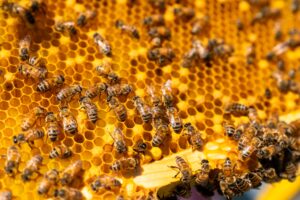Being close to Perth is bitter-sweet for Swan Valley tourism operators, who benefit from proximity to their target market but also attract “undesirable visitors”.
That’s the finding of a study into the pros and cons of the vineyards being within a 30-minute drive of the city.
The researchers interviewed wineries, restaurants and other tourism operators about the consequences of the valley being engulfed by residential development.

On the plus side, the Swan Valley is able to attract day trippers staying in Perth.
But the valley competes with other destinations such as Fremantle, Rockingham and the northern beaches.
And businesses have to put up with anti-social behaviour from drunk locals.
SPRING IN THE VALLEY
The research specifically mentions the now discontinued Spring in the Valley festival.
Many businesses believe the event contributed to Swan Valley’s reputation as a place where locals hop on a bus, party and make fools of themselves.
Notre Dame Dean of Business Professor Werner Soontiens, who led the study, says the biggest disadvantage of being close to the city was the “unwanted attention”.
“Most people in Perth would remember the Spring in the Valley event, which unfortunately turned out to be much a drink fest, with socially unacceptable behaviour associated with it,” he said.
This reputation of the Swan Valley as a place to get drunk contributed to the valley attracting unwanted visitors.
“Having hens’ parties and really people visiting the valley simply to consume alcohol,” Werner says.

OPPORTUNITY FOR REINVENTION
Werner says the challenge for Swan Valley operators is to reinvent the region’s identity as an agritourism destination.
“The attractions in the Swan Valley have moved away from the wineries and the grape production—although the notional image is still there,” he says.
“A lot of it is around restaurants and associated industries like beer brewing and nougat and honey.”
VISITORS WITH DEEPER POCKETS
Werner says tourism operators would like to attract visitors with deeper pockets.
He says day visitors can be quite frugal and unpredictable.
They might stop for a beer in a brewery and lunch in a cafe while driving past, rather than set out with the aim of going to a single business and spending the day there.
Instead, the industry wants visitors who will spend significant amounts of money in one place.
That means buying not just a coffee or a bottle opener but a piece of art or an extensive meal with family.

But Werner says the variety of niche operators in the valley almost undermines their ability to do that.
“The honey place only has honey, the chocolate place virtually only has chocolate,” he says, “so it forces tourists to go to multiple locations. The 100-odd dollars they wanted to spend during the day then becomes $5 here and $10 there instead of $100 at one location.”
By positioning the Swan Valley as an agritourism destination, businesses may be able to attract a different type of visitor with more money to spend.
Although at the end of the day, you can tailor tourism messages for a region but you can’t hand pick your customers.











